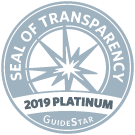Hello everyone! We are here with an exclusive, never-before-seen interview with one of the oldest and most talked about streams in the Mystic River watershed: Alewife Brook! I am your host, Watershed Field Scientist Jennifer Delgado, and I am here to ask and obtain answers for all your burning questions pertaining to the history and background of Alewife Brook, the updates on its rumored water quality, and of course their thoughts on the upcoming studies!
Jennifer: Alewife it’s so good to finally sit down and catch up!
Alewife: A pleasure, I am excited to see where this conversation flows.
J: I wanted to start off with a simple question that I know some of our readers might know the answer to but is an interesting story that deserves to be retold. Where does your name come from?
A: It is a good story. My name was given to me by my old friends the Alewife river herring that used to visit my waters. They were a popular and interesting fish that were loved by everyone including humans who caught and ate them for food and used them as fertilizers for their crops.
J: Amazing! Do you still see the Alewives a lot?
A: Unfortunately, no…I don’t see nearly as many as I did in the old days. Times have changed and so have I, in more ways that one.
J: Oh, I am sorry, would you like to elaborate more on that?
A: Yes I can! I believe the change in my dissolved oxygen levels might be one of the causes. Dissolved oxygen is critical for animals and plants to live, and at least here in Massachusetts, the water quality standard is about 5 mg/L. On the average summer morning, my waters almost never have that much oxygen, and summer is when those migratory fish are around. The annual cycle of dissolved oxygen is seasonal and the warmer water temperature during the summer already holds less dissolved oxygen. But no other stream in the Mystic watershed has concentrations as low as mine. Thank goodness, because that means the river herring can thrive, just not in me.
J: Alewife, do you know why it is that you have low dissolved oxygen?
A: I think it's a variety of reasons, including possibly accumulated material from combined sewer overflow (CSO)* releases in my sediments. But don't even get me started on CSOs.
*Combined Sewer Overflows (CSOs) are intentional outflows of untreated sewage and rainwater discharged into rivers and streams during very wet weather. They are the result of mid-19th century water infrastructure that is built with a connected sewer and storm drain system. For more on CSOs, check out this page.
J: I see, we can definitely put a pin in that CSO talk. I am sorry to hear about your river herring friends, Alewife. I know how much you must miss them.
A: You know, they are a special resilient fish, they are one of the few anadromous fish species, meaning that they spend most of their time in salt water, but they return to their original freshwater homes every year to spawn. I know they will return one day to visit me though, and I will welcome them with open, clean, oxygen-filled waters.
J: I agree, they seem like the type that will never give up! You mentioned that you have changed in more ways than one in an earlier question, and I understand that you are a very old stream. I wanted to ask; do you remember what you were like 100 years ago? How have you changed?
A: I do remember. Back then my path was more curved. I dared to meander and fill the surrounding wetlands more often where waterfowl and many other species resided. My banks were soft and muddy and the land beyond that fertile. Here is a picture of what I looked like!
Source: TBG (The Bioengineering Group) 2003. Alewife Reservation and Alewife Brook Master Plan.
J: Wow how beautiful! It looks like you had much more space to move and change.
A: Yes I’ve gone through many changes since then. They drained and cut down most of the wetlands around me. They also made me more narrow and channelized. My sides were also filled out with concrete. Here is a picture of how I look now!
Imagery © Google Maps, Imagery © Airbus, CNES / Airbus, Maxar Technologies, Map Data © 2024
J: Can you get water out fast then? I guess concrete can help with that, no? So that the banks don’t overflow?
A: Not exactly. Yes, it does help with getting water out faster. The USGS graph here shows how during a wet day I can get rid of water quickly. But when it rains too fast and hard, I tend to overflow and cause flooding on my banks! This past year there have been certain areas that have flooded as a result. MyRWA and Save the Alewife Brook are doing a study to look at causes of localized flooding and the possible benefits to flow and to the ecosystem!
A graph looking at flow during a rain event. Credit: USGS
J: That’s amazing. Thank you so much for sharing your stories and experiences with us.
A: My pleasure, I am excited to share what the future holds.









